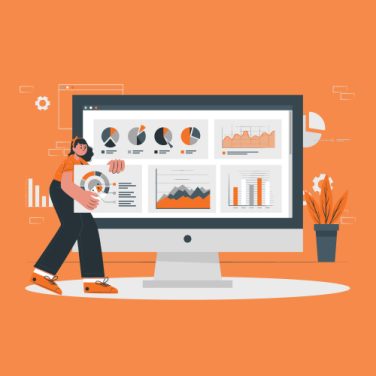The world of mobile time and attendance software has replaced punch cards and manual spreadsheets.
Smartphones empower teams to clock in and out from any location. This shift accelerates HR workflows by delivering real-time attendance data directly into payroll systems.
Legacy timekeeping often suffers from errors, lost cards, and buddy-punching. A mobile clocking in app eliminates these pitfalls. It ensures every timestamp is captured accurately and securely.
Modern HR managers rely on mobile attendance to streamline scheduling, improve compliance, and reduce administrative overhead.
Why mobile matters in attendance management
Employees carry smartphones on every job site. A mobile time clock app harnesses onboard cameras, GPS, and secure biometric sensors to validate identities. Data flows seamlessly into HRIS platforms, cutting manual data entry by 90%.
Mobile-first solutions empower staff to view schedules, request leave, and swap shifts from their devices. This level of self-service increases engagement and accountability. Implementing a robust mobile biometric attendance system helps businesses maintain accurate records and meet labour regulations without paper trails.
Transitioning to mobile time and attendance software reduces payroll errors and administrative delays. HR teams can focus on strategy instead of chasing timesheets. The next sections explore key features, benefits, and best practices to adopt a mobile-first approach.
Key features of mobile clocking in apps
A mobile clocking in app must combine strong security, location validation, and user-centric design.
Below is a feature breakdown highlighting how each capability supports accurate payroll and empowers staff through a dedicated self-service experience.
Core features of a mobile clocking in app
| Feature | Description | MiHCM Capability | Benefit |
|---|---|---|---|
| Facial & Voice Recognition | Secure, contactless clock-in using face and voice | Attendance and Time Management | Accurate time tracking and reduced payroll errors |
| GPS & Geofencing | Validates clock-in location within predefined boundaries | Chấm công bằng điện thoại | Accurate time tracking and reduced payroll errors |
| Real-Time Clock-In/Out | Instant updates to timesheets and dashboards | Attendance and Time Management | Accurate payroll processing |
| Employee Self-Service Portal | Shift swaps, leave requests, schedule views | Employee Self-Service, Flexible Shift Adjustments | Enhanced employee empowerment through self-service |
The combination of facial and voice recognition with GPS and geofencing creates a secure, contactless verification process.
When employees use MiHCM’s Attendance and Time Management and Mobile Attendance Tracking, every clock-in/out event is mapped to the correct project or site. Automatic timesheet updates eliminate manual entry errors, ensuring data flows directly into payroll engines.
Meanwhile, the Employee Self-Service portal lets staff initiate shift swaps, request time off, and review hours from their devices. Flexible Shift Adjustments adapt to last-minute scheduling changes without manual calls or emails.
Together, these features reduce administrative burdens and support accurate time tracking and reduced payroll errors, while also delivering enhanced employee empowerment through self-service.
- Facial and Voice Recognition: Leverages device cameras and microphones to match stored biometric templates and prevent shared PINs or buddy-punching.
- GPS and Geofencing: Defines virtual boundaries around worksites, triggering alerts for out-of-zone clock-ins.
- Real-Time Updates: Synchronises entries instantly with central systems and notifies managers of anomalies.
- Employee Self-Service: Mobile dashboards display schedules, overtime, and leave, syncing approved requests with HRIS.
- Flexible Shifts: HR teams adjust rosters on the fly, with automated notifications keeping teams aligned.
Combining these features in one mobile time clock app eliminates tool sprawl.
Benefits of a mobile time clock app
The shift to a mobile time clock app delivers quantifiable returns. Organisations eliminate fraud, accelerate payroll, and improve compliance. Real-time alerts and transparent records boost both productivity and trust between HR and field staff.
- Reduced Time Fraud: Biometric checks and geofencing prevent buddy-punching and off-site clock-ins, safeguarding payroll budgets.
- Automated Payroll Feeds: Direct integration with HRIS and payroll systems cuts manual entry by up to 90%, accelerating pay runs.
- Employee Transparency: Staff view their hours and leave balances instantly, fostering trust and reducing support inquiries.
- Proactive Alerts: Managers receive notifications for missed punches, late arrivals, or overtime, enabling timely intervention.
- Regulatory Compliance: Audit trails meet labour law requirements, supporting dispute resolution with tamper-proof records.
Adopting a mobile biometric attendance system also improves satisfaction. Employees feel empowered by self-service capabilities, reducing HR support tickets by nearly 30%. Transparent workflows and on-the-go access drive engagement and retention.
Real-time workforce analytics, powered by solutions like MiHCM Data & AI, highlight attendance trends and absenteeism patterns. These insights guide staffing decisions, optimise shift patterns, and lower overtime costs. Organisations see measurable ROI through reduced payroll adjustments, lower administrative overhead, and improved labour compliance.
Furthermore, coupling mobile attendance data with predictive analytics can forecast staffing needs and identify underutilised capacity. Tools like SmartAssist automate approval workflows, accelerating shift changes and leave processing without manual oversight. This agility not only cuts costs but also strengthens employee trust by removing administrative delays from their daily routines.
Implementing mobile time and attendance software thus yields both operational and financial gains. The combination of fraud reduction, automated data feeds, and employee empowerment lays the foundation for a more agile, responsive workforce management strategy.
Implementing a mobile biometric attendance system
Implementing a mobile biometric attendance system requires a structured approach. Clear planning, secure enrolment, and thorough integration ensure a smooth rollout. The following checklist outlines each phase:
- Planning: Define scope, compliance requirements, and geofence policies. Align stakeholders on mobile attendance workflows and data governance standards.
- Enrolment: Capture employee biometric profiles—facial or voice templates—using secure channels. Verify data storage complies with local privacy regulations.
- Pilot Phase: Select a small user group to test the mobile time clock app. Gather feedback on usability, performance, and network coverage.
- Training: Conduct hands-on sessions for HR, managers, and field staff. Provide quick-reference guides and video demos for the mobile attendance tracking features.
- Integration: Sync clock-in/out data seamlessly with payroll, scheduling, and HRIS modules. Validate data flows for accuracy and completeness.
- Security Measures: Implement end-to-end encryption for data in transit and at rest. Enforce role-based access controls and audit logging for each attendance event.
During the pilot, track key metrics such as enrolment completion rates, average clock-in times, and error reports. Use MiHCM Enterprise tools to monitor geofence violations and biometric match success rates. Address any connectivity or user experience issues before full-scale deployment.
After the pilot, refine policies and update training materials. Roll out the solution in phases, grouping locations or departments to manage change effectively. Leverage MiHCM Lite for smaller teams or MiHCM Enterprise for complex, multi-site deployments. Integrate with MiHCM Data & AI to analyse attendance patterns and SmartAssist to automate shift approvals and leave management.
Post-implementation, establish a governance committee to oversee attendance policies, review audit logs monthly, and adjust geofence parameters. Continuous improvement maintains system integrity and builds trust in the mobile time and attendance software.
Best practices for mobile-first attendance management
Adhering to best practices ensures a robust and user-friendly mobile time and attendance software deployment. The following guidelines help maintain data integrity, security, and user satisfaction:
- Clear Mobile Clock-In Policies: Define geofence boundaries, clock-in windows, and acceptable biometric methods. Communicate these rules in employee handbooks and training materials.
- Ongoing Training & Support: Offer refresher sessions, FAQs, and a dedicated helpdesk. Update guides when new features—such as enhanced facial recognition—are introduced in the mobile clocking in app.
- Regular Audits: Review GPS and biometric logs weekly. Use automated alerts in MiHCM Enterprise to flag anomalies like repeated failed authentication or out-of-bounds punches.
- Integrated Data Flows: Connect mobile attendance records with payroll, scheduling, and analytics engines. Leverage MiHCM Data & AI for trend analysis and SmartAssist for approval automation.
- User Feedback Loops: Gather input on app usability and feature requests. Iterate on UI/UX to streamline the mobile time clock app interface and reduce friction.
By standardising policies, training proactively, and auditing logs, organisations minimise errors and compliance risks. Integrated data flows and feedback loops drive continuous improvement, ensuring the mobile biometric attendance system remains secure and efficient.
These best practices not only protect payroll integrity but also foster trust. Employees feel confident using the app when policies are transparent, and support is readily available.
How to choose the right solution
Selecting the right mobile time and attendance software requires evaluating how each option aligns with organisational needs.
Scalability, security, compliance, user experience, integration, and vendor support all factor into the decision. Weighing scalability against feature-richness ensures you invest in a solution that delivers value today and grows with your business.
Scalability vs. feature-richness: Finding the balance
Smaller teams may prioritise ease of use and cost-efficiency, while larger enterprises demand advanced controls and analytics.
MiHCM Lite offers core mobile attendance tracking and timesheet updates with minimal setup. In contrast, MiHCM Enterprise adds granular biometric verification, geofencing, and role-based access, supporting hundreds or thousands of users across multiple sites.
- Scalability: Ensure the solution can handle increasing user counts, multiple locations, and concurrent logins without performance degradation.
- Authentication Methods: Compare PIN-only systems against biometric and geofencing options for security and user convenience.
- User Experience: Evaluate the clock-in/out flow, self-service portal, and mobile UI to minimise friction for field staff and HR administrators.
- Integration: Confirm compatibility with existing HRIS, payroll, and scheduling systems. Look for API support and pre-built connectors.
- Vendor Support & Cost: Assess service-level agreements, mobile OS compatibility, and total cost of ownership, including licenses, maintenance, and scaling fees.
Ultimately, the ideal solution balances core functionality with the flexibility to add advanced features over time. Organisations should pilot potential options to measure performance, security, and user satisfaction before committing to a long-term contract.
Consider the roadmap and upgrade paths to ensure smooth transitions from basic to enterprise-grade mobile clocking in app capabilities.
Mapping MiHCM solutions to your attendance needs
MiHCM’s modular suite adapts to diverse attendance workflows, delivering tailored solutions for various organisational sizes. Below are practical mappings of MiHCM products to common mobile attendance scenarios:
- Small Teams with Basic Clock-Ins: MiHCM Lite provides a lightweight mobile time clock app that supports GPS-based clock-ins, basic timesheet exports, and simple shift scheduling. It includes core Attendance and Time Management capabilities, enabling managers to track hours without complex setups.
- Large Enterprises Needing Advanced Controls: MiHCM Enterprise integrates mobile biometric attendance system features such as facial recognition and voice authentication. Its geofencing engine enforces location-based rules across multiple sites, while role-based access ensures data security for thousands of users.
- Analytics-Driven Staffing Strategies: MiHCM Data & AI processes mobile attendance data to reveal trends in tardiness, absenteeism, and overtime spend. These actionable insights inform workforce optimisation and budgeting for staffing peaks.
- Automated Approval & Workflows: SmartAssist leverages attendance events to trigger approvals for shift adjustments, overtime requests, and leave. Automated notifications in the mobile clocking in app accelerate decision-making and reduce manual HR tasks.
- Employee Self-Service at Scale: MiA extends mobile attendance tracking with a comprehensive self-service portal. Employees access payslips, review leave balances, and submit timesheets from their smartphones, enhancing engagement and reducing support tickets.
Each product leverages MiHCM’s underlying platform to ensure data consistency. For example, a field services firm might start with MiHCM Lite and upgrade to MiHCM Enterprise as headcount grows. By adding MiHCM Data & AI, the firm uncovers attendance anomalies and optimises labour allocation.
Overall, MiHCM’s modular mobile attendance suite delivers scalable, secure, and analytics-driven solutions that evolve with organisational needs.
Frequently Asked Questions
What is mobile time and attendance software?
How does a mobile clocking in app work?
What features should I look for?
How do I implement it?
How do I choose the right solution?
Evaluate security (authentication methods), scalability (user counts and locations), user experience (ease of clock-in/out and self-service), integration capabilities, vendor support, mobile OS compatibility, and total cost of ownership. Pilot candidates before committing. For customised guidance, contact MiHCM to schedule a demo and discuss how our mobile-first attendance solutions can address your specific needs.



